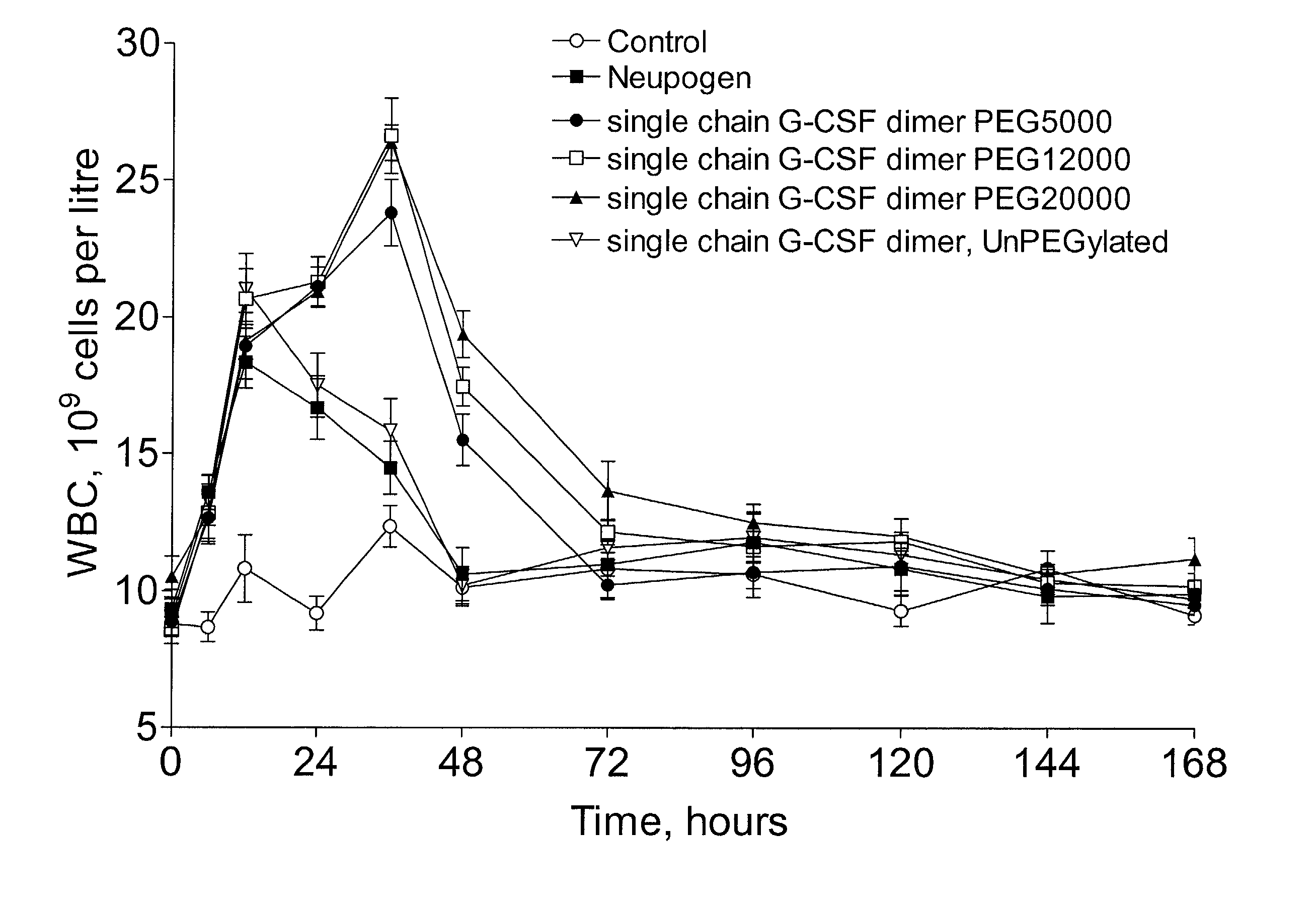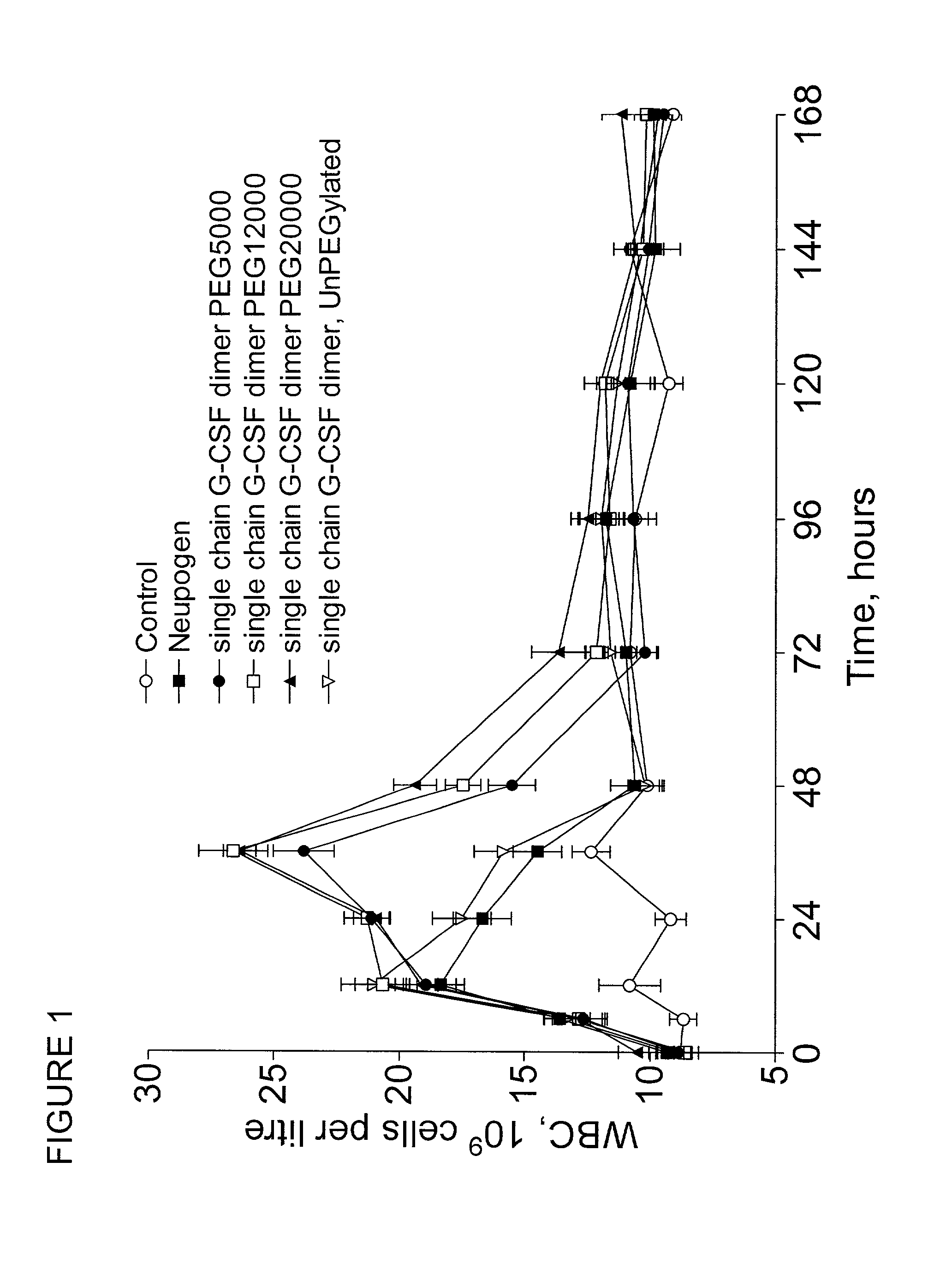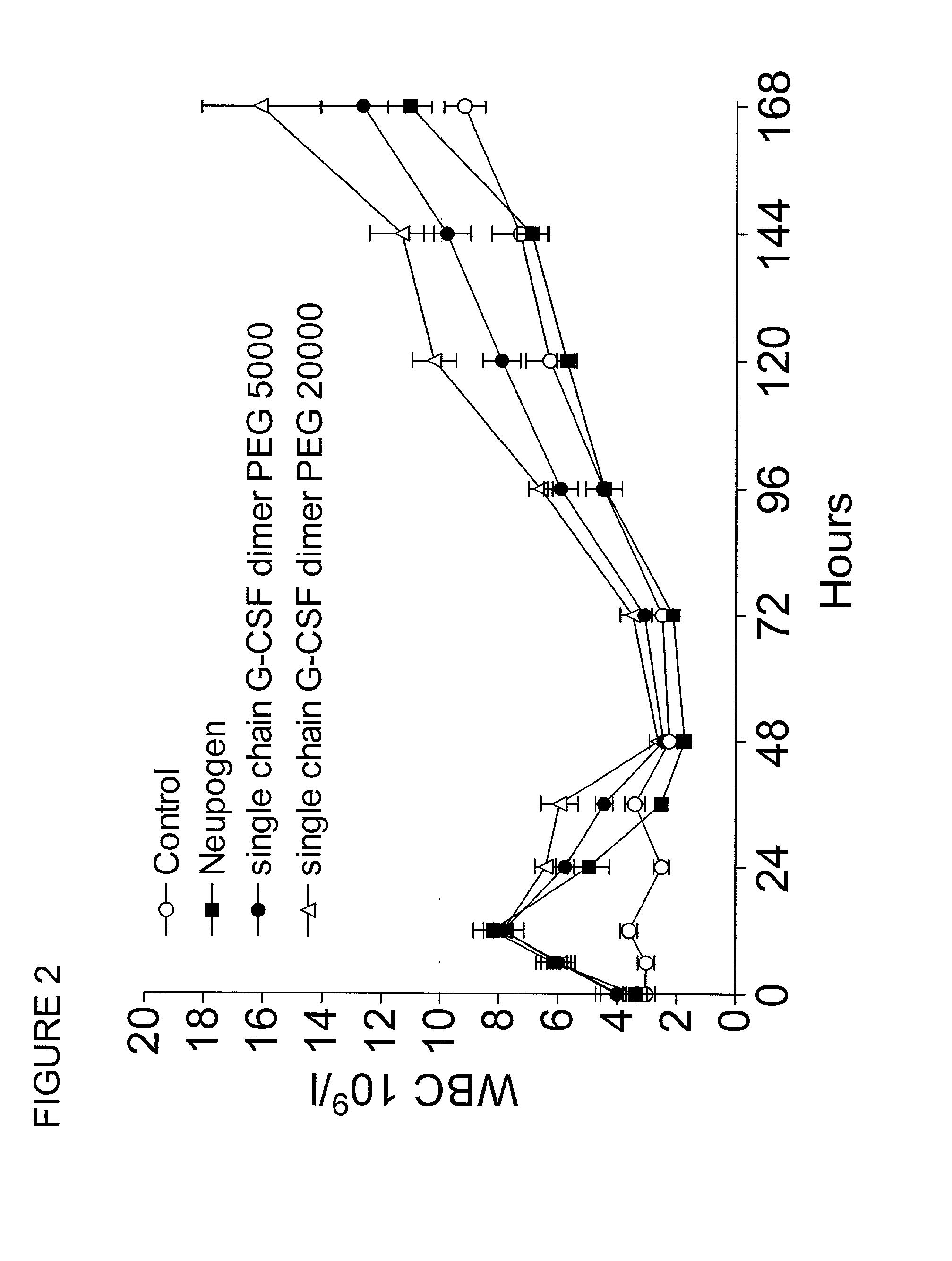Single-chain polypeptides
a single-chain polypeptide, multi-mer polypeptide technology, applied in the direction of peptide/protein ingredients, drug compositions, extracellular fluid disorder, etc., can solve the problems of significant decrease in the overall biological activity, insufficient plasma half-life,
- Summary
- Abstract
- Description
- Claims
- Application Information
AI Technical Summary
Problems solved by technology
Method used
Image
Examples
example 1
[0359] Construction and Cloning of a Synthetic Gene Encoding Single-chain G-CSF Dimer
[0360] A DNA fragment, encoding the YAP3 signal sequence (WO 98 / 32867, SEQ ID NO:2), the TA57 leader sequence (WO 98 / 32867, SEQ ID NO:3), a KEX2 protease recognition site (AAAAGA), G-CSF copy 1 (SEQ ID NO:4) and G-CSF copy 2 (SEQ ID NO:5) in the single-chain G-CSF dimer was synthesised following the general procedure described by Stemmer et al. (1995), Gene 164, pp. 49-53. A Bam HI and an Xba I digestion site were introduced upstream and downstream, respectively, of the gene. The DNA fragment was cloned into the Bam HI and Xba I digestion sites in plasmid pJSO37 (Okkels, Ann. New York Acad. Sci. 782:202-207, 1996) using standard DNA techniques, resulting in plasmid pscG-CSF.
[0361] Another DNA fragment, consisting of a Bam HI digestion site, the Kozak consensus sequence (Kozak, M., J Mol Biol, August 1987; 196(4):947-50), a sequence encoding the hG-CSF signal peptide (SEQ ID NO:7), G-CSF copy 1 with ...
example 2
[0362] Expression of Single-chain G-CSF Dimer in Saccharomyces cerevisiae
[0363] Expression of the single-chain G-CSF dimer in S. cerevisiae YNG318 (available from the American Type Culture Collection, VA, USA as ATCC 208973) was performed using the following procedure: 10 .mu.l 0.2 .mu.g / .mu.l pscG-CSF, 10 .mu.l salmon testes carrier DNA and 100 .mu.l competent S. cerevisiae YNG318 cells were mixed and 600 .mu.l 25% PEG 4000 containing 0.1 M lithium acetate was added. The cells were incubated at 37.degree. C for 30 minutes and placed in a 42.degree. C. water bath for 15 minutes. The cells were pelleted by centrifugation (4000 rpm, 2 minutes), the supernatant was discharged and the cells were resuspended in non-selective YPD medium (1% w / w yeast extract (Difco), 2% w / w peptone bacto (Difco), 3% w / w dextrose (Roquette)). Following incubation at 37.degree. C. for 1 hour, the cells were plated on selective SC-without-uracil medium (7.5 g per liter yeast nitrogen base w / o amino acids (Di...
example 3
[0365] Expression of Single-chain G-CSF Dimer in Chinese Hamster Ovary (CHO) Cells
[0366] The day before transfection the CHO K1 cell line (ATCC #CC1-61) was seeded in a T-25 flask in 5 ml DMEM / F-12 medium (Gibco # 31330-038) supplemented with 10% FBS and penicillin / streptomycin. The following day (at nearly 100% confluency) the transfection was prepared: 90 .mu.l DMEM medium without supplements was aliquoted into a 14 ml polypropylene tube (Coming). 10 .mu.l Fugene 6 (Roche) was added directly into the medium and incubated for 5 min at room temperature. In the meantime 5 .mu.g plasmid pscG-CSFCHO was aliquoted into another 14 ml polypropylene tube. After incubation the Fugene 6 mix was added directly to the DNA solution and incubated for 15 min at room temperature. After incubation the whole volume was added drop-wise to the cell medium.
[0367] The next day the medium was exchanged with fresh medium containing 360 .mu.g / ml hygromycin (Gibco). Every day hereafter the selection medium ...
PUM
| Property | Measurement | Unit |
|---|---|---|
| Fraction | aaaaa | aaaaa |
| Fraction | aaaaa | aaaaa |
| Fraction | aaaaa | aaaaa |
Abstract
Description
Claims
Application Information
 Login to View More
Login to View More - R&D
- Intellectual Property
- Life Sciences
- Materials
- Tech Scout
- Unparalleled Data Quality
- Higher Quality Content
- 60% Fewer Hallucinations
Browse by: Latest US Patents, China's latest patents, Technical Efficacy Thesaurus, Application Domain, Technology Topic, Popular Technical Reports.
© 2025 PatSnap. All rights reserved.Legal|Privacy policy|Modern Slavery Act Transparency Statement|Sitemap|About US| Contact US: help@patsnap.com



